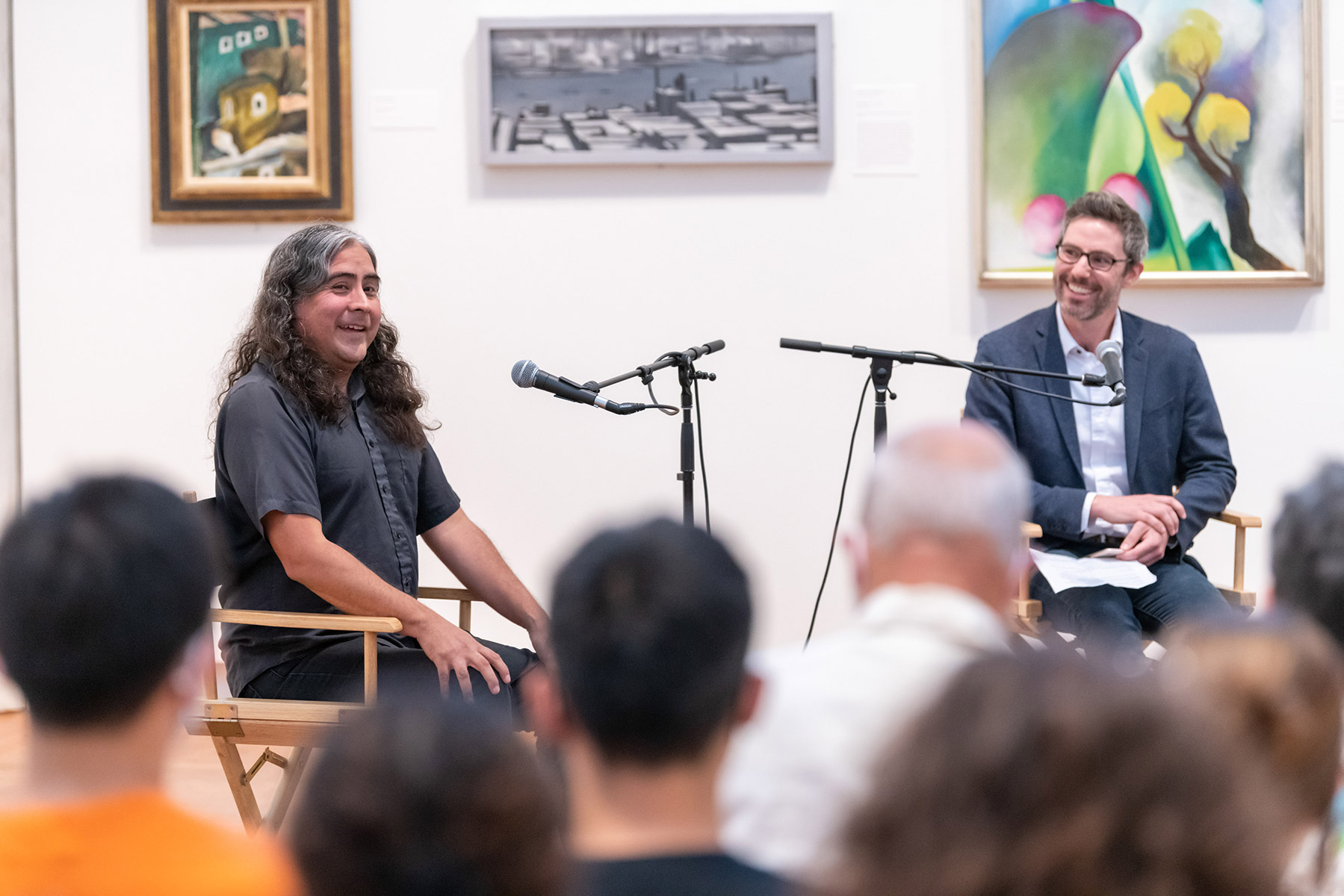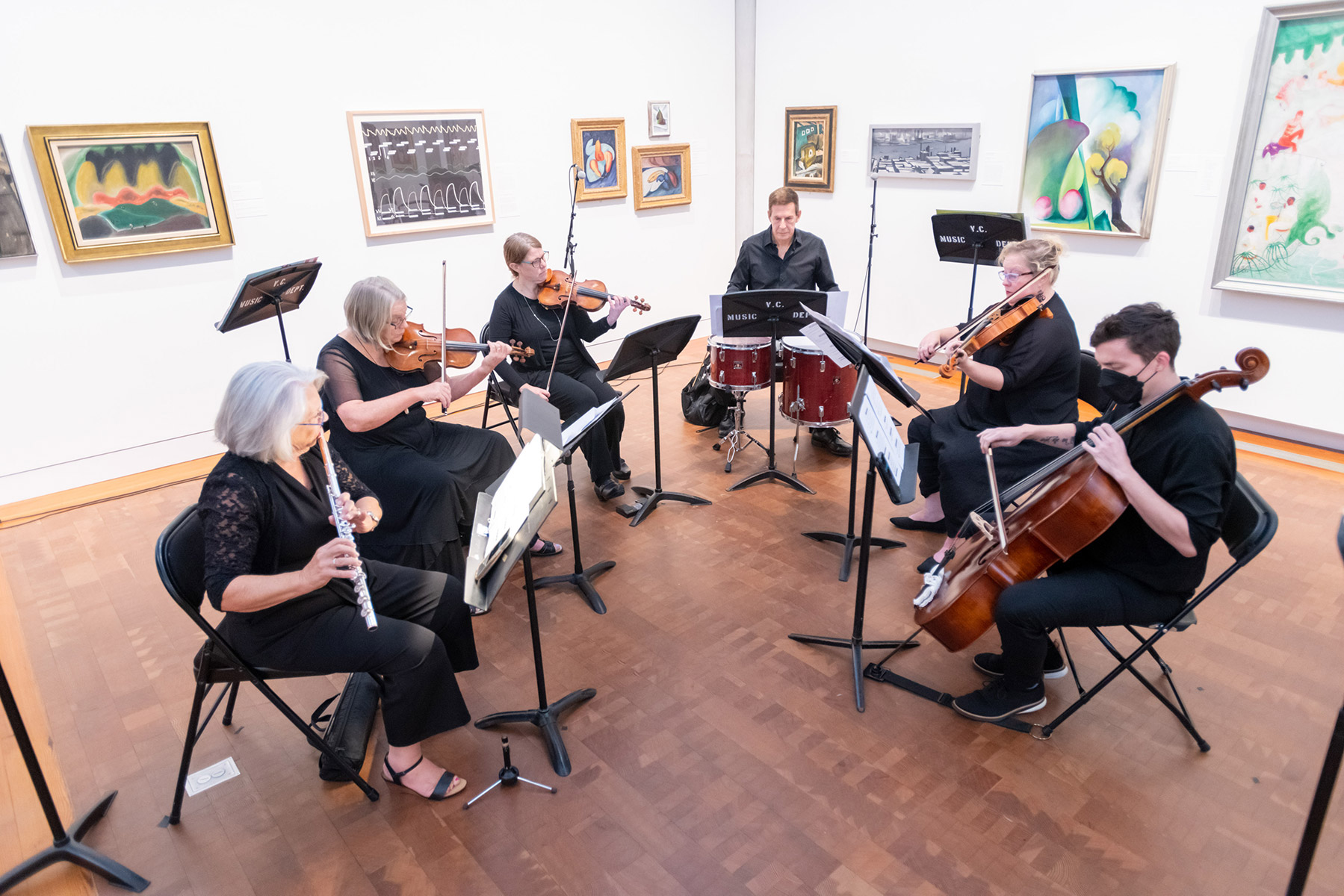Pulitzer-Winning Composer Raven Chacon Talks About His Work at the Loeb
Raven Chacon (Diné) might be the only composer who has ever drawn inspiration from an article in a decades-old science magazine. But a performance of Chacon’s composition Horse Notations, based on such an article, drew a standing ovation September 1 from the nearly 200 in attendance in a gallery of the Frances Lehman Loeb Art Center on the Vassar College campus.
Chacon, who was born in Fort Defiance, Navajo Nation in Arizona, is the first Native American awarded the Pulitzer Prize in music for his 2021 composition Voiceless Mass. Before Horse Notations was performed at the Loeb, he spoke about his unorthodox journey as an artist with John Murphy, the museum’s Curator of Prints and Drawings.

A lithograph Chacon had created to accompany Horse Notations hung in the gallery just over Chacon’s right shoulder during his conversation with Murphy. The lithograph and the musical composition reflect Chacon’s interpretation of an article in a 1974 edition of Popular Science magazine in which a researcher analyzed the rhythms of horses’ gaits. The musical composition was performed by two violinists, a violist, a cellist, a flutist, and a drummer, who used variations of volume and pace to reflect the movements and sounds of a horse as it walked, trotted, cantered and galloped. Musicians who took part in the performance were Marka Young (violin) and Frank Cassara (percussion), both members of the Vassar faculty; and Marcia Gates (flute), Heather Haskew Vogel (violin), Kathy Bosman (viola), and Sam Quiggins (cello).

Chacon, who earned an MFA in music composition from the California Institute of the Arts, said he didn’t aspire to be a musician early in his life. “For me, music is a lot of experimentation,” he said. “I played several instruments as a child and wasn’t very good at any of them.” But his fascination with the sounds of people and places has prompted him to often carry small recording devices with him to capture them. “The universe sometimes has a way of reminding you that you exist, and I started to think about my role as an organizer of sounds,” he said.
Chacon said he was carrying a small cassette recorder in his pocket in November 2016 when he went to North Dakota to support members of the Sioux Nation who were resisting the construction of an underground oil pipeline that threatened their water supply and ancestral burial grounds. “In my recordings you can hear the anger and frustration of the water protectors, and the drones (flown by) the police and the counter drones flown by the protectors,” he said.
Later, Chacon said, he recorded “absolute silence” when a group of women elders from the Sioux Nation confronted law enforcement officials on a bluff. “For 10 minutes I recorded the sound of 600 people who were silent,” Chacon said. “The police wouldn’t look at them—they just stared at the ground—and you could feel the frustration and anger.”
During a question-and-answer session following the performance of Horse Notations, Chacon was asked if he ever revised his compositions after he finished them. “I’m always revising because I don’t know what I’m doing sometimes,” Chacon replied. “That’s the nature of experimental music.”
He closed his remarks by saying how much he had enjoyed experiencing the performance in the Loeb gallery. “You can always go home and listen to recordings, but for me, the space where the music is performed contributes to the performance—it’s another part of the composition. And I always value the presence of the people sitting there, together, to listen.”